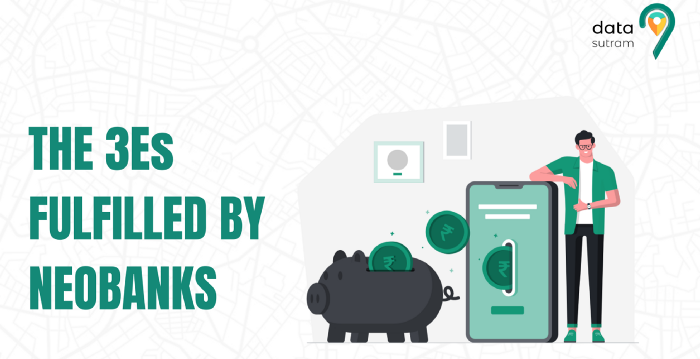The 3Es Fulfilled By Neobanks


Neobanks have steadily been establishing themselves as the new revolution in the rapidly evolving banking industry. Reports from PwC point to their tremendous potential as the global neobank market was worth USD 18.6 billion in 2018 and is set to generate around USD 394.6 billion by 2026. However, what is really ‘neo’ about neobanks?
Seemingly similar, there is a vast array of differences between neobanks and digital banking. Digital banks are online channels of predominantly established banks, be it the private or public sector. Neobanks on the other hand, enjoy a solely online existence without any physical branches.
Since neobanks do not have their banking licenses in India but offer many benefits such as reduced administrative effort, simpler value chains and transaction records- they operate in partnerships with traditionally established banks. This is the first E that neobanks fulfill — where they make banking “Easy”.

While India’s immense population and rapid smartphone adoption rate of 54% (reported in 2020) suggest very good prospects for neobanking, legal policies aren’t the sole hindrance.
More than 80% of India’s population is underbanked and while this may seem like a problem, neobanks are designed to overcome it- with reports suggesting a dramatic volumetric growth of 92% in mobile banking from 2017–2018.
Not only does the general population of the country provide growth opportunities but also the ever-expanding MSME and SME sector of the country. Stuck in an endless loop of not being able to collect credit due to a skewed credit score- neobanks have a huge market to serve, fulfilling a gap traditional financial institutions have not been able to fill by the second E of “Electronic” channels, easily accessible for one and for all.

There are currently 4 neobanks in India and it is clear from their examples that the advantages of neobanks outweigh their disadvantages significantly. The most obvious benefits of neobanks would be the low cost structure and subsequently better rates offered on savings and deposit accounts, aided by possible facilities such as 24*7 chatbots and AI powered intuitive banking options to assist a customer not familiar with traditional banking.
Powerful boosts for MSMEs lie in the provision of deep insights and automated maintenance of financial records, along with simple APIs incorporated to make seamless payment channels. Many of them have partnered with internationally established banks, thus providing an opportunity to expand their business overseas and witness possible returns for the same.
Thus, it can be understood that neobanks truly are game changers– as they fulfill the third E, by revolutionizing “Experiences” at a macroscopic as well as microscopic level.

To summarize, the ideology of neobanks could be described by 3Es — Easy Electronic Experiences of evolving finance. By being transparent to customers and tapping into a sector with the intention of transforming informal credit to democratized, formal credit- neobanks show great promise as disruptive financial models and optimistically, we should be seeing a new fintech revolution underway soon.